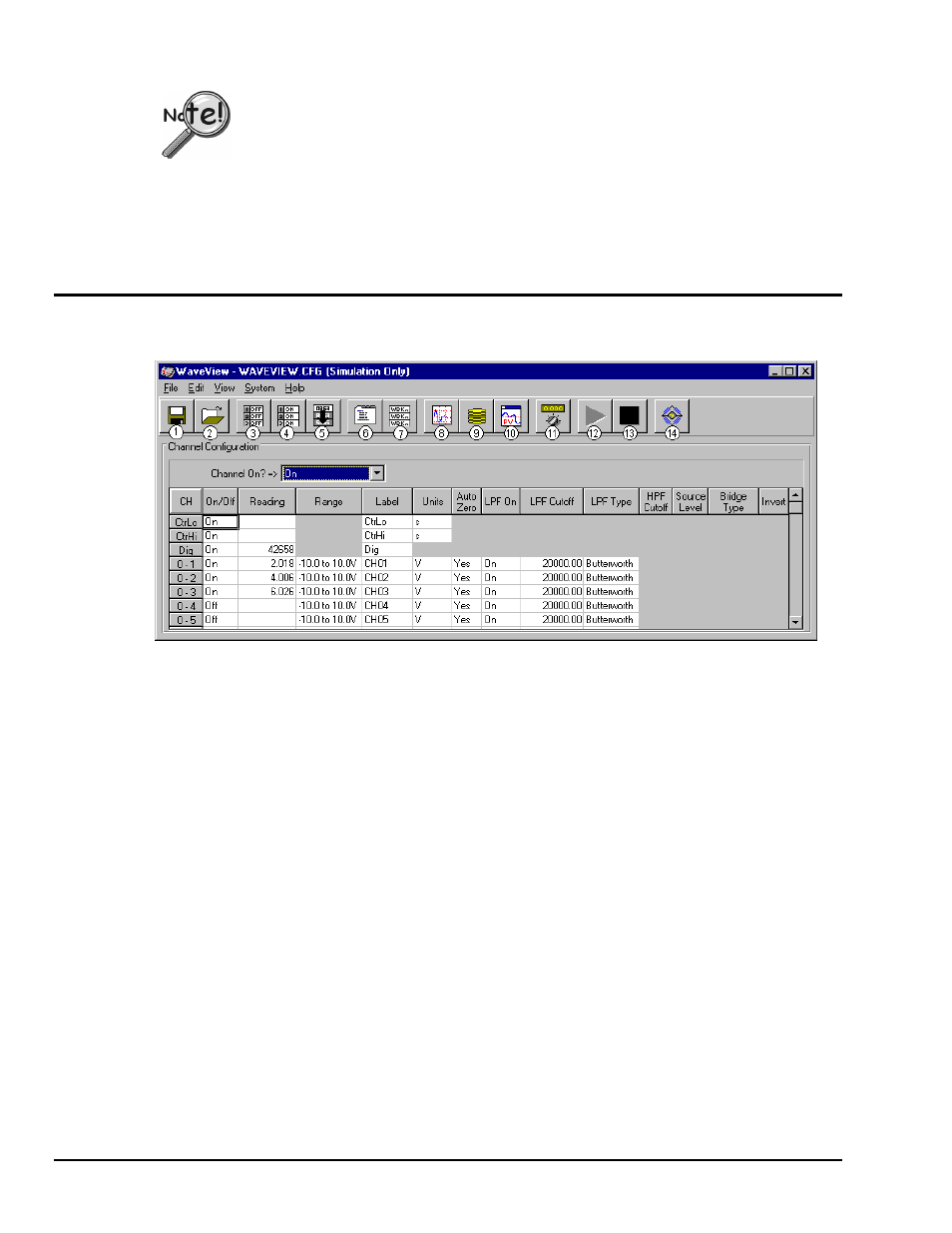Store data (and use postview, optional), Waveview configuration main window, Menu items & buttons – Measurement Computing WaveBook rev.3.0 User Manual
Page 100: Ta…… 5-6, Enu items & buttons…… 5-6, Store data

5-6 WaveView,
6-24-99
WaveBook User’s Manual
Store Data (
and use PostView, optional
)
Data to be used in PostView must be in ASCII (.txt) or PostView Binary (.iot) format.
From WaveView, you can select the PostView Binary format by navigating as follows:
WaveView Main Window
⇒
⇒
⇒
⇒ System ⇒
⇒
⇒
⇒ Options ⇒
⇒
⇒
⇒ Data Files tab.
Save collected data to disk by clicking on the Save As button ("floppy disk" or left-most button), and then
giving the file a name. Note that you can analyze the saved data with PostView, a post-acquisition data-
viewer program.
To open PostView, return to the WaveView Configuration main window. You may select the PostView
option from the View menu, or click on the PostView button (button 10) from the toolbar. Refer to
chapter 6 for detailed PostView information.
WaveView Configuration Main Window
The following figure shows a sample of the WaveView Configuration main window.
WaveView Configuration Main Window
Item
Description
Item
Description
1
Save Configuration
8
Open Scope Window
2
Load Configuration
9
Open Direct to Disk
3
Turn All Channels Off
10
Launch PostView with Latest Acquisition File
4
Turn All Channels On
11
Auto Zero Enabled Channels
5
Fill Down
12
Enable Spreadsheet Reading Column
6
Open Acquisition Configuration Dialog
13
Disable Spreadsheet Reading Column
7
Open Module Configuration Dialog
14
Open WBK16 Sensor Calibration Window
WaveView interrogates the hardware after it starts up to see what options and expansion modules are
actually connected to the WaveBook. The number of channels displayed on the configuration menu
corresponds to all the channels connected.
Menu Items & Buttons
WaveView functions are initiated through toolbar buttons and pull-down menu selections. The toolbar
buttons are identified in the above figure. In the following sections, menu functions are explained in order
of the menu structure.
Note: The following menu descriptions also apply to corresponding toolbar buttons, when applicable. Not
all menu items have a corresponding tool button.